The Democratization of Value
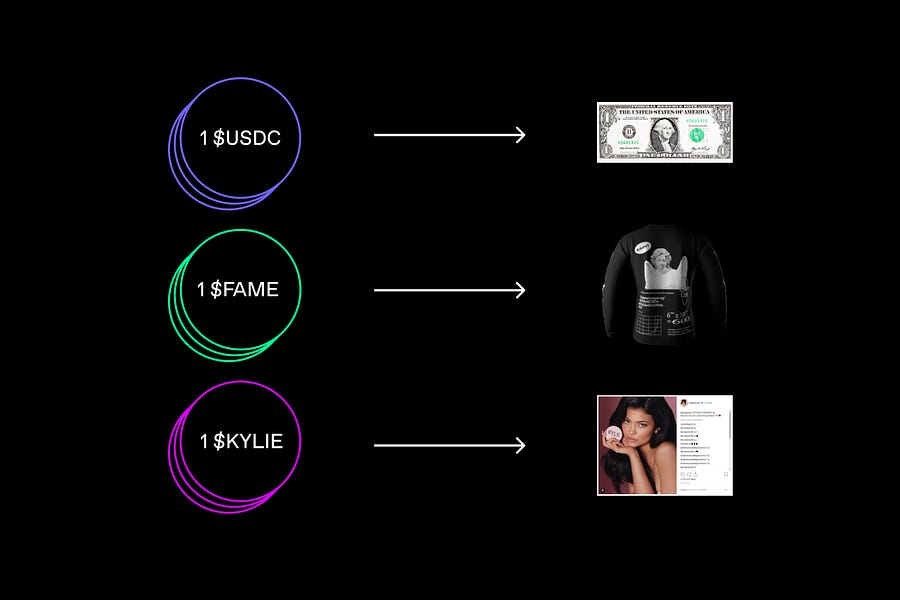
Level up your open finance game three times a week. Subscribe to the Bankless program below.
Dear Crypto Natives,
There’s almost $7b in redeemable tokens on Ethereum today.
We call them stablecoins.
True, they’re not trustless. There’s an issuer. Reputational trust.
But there’s massive opportunity to be unlocked when these redeemable tokens use the infrastructure of Ethereum to democratize value on the internet—the way blogs, twitter, and youtube democratized media.
We’ve already uploaded billions of fiat to crypto. What can we upload next?
Jacob worked on USDC at Coinbase. But he thinks stablecoins are just the start. We’ve only scratched the surface on the potential of redemption tokens. An analogy—we’ve just invented .jpeg and we’ve yet to unlock Instagram.
There are a dozen gems in this piece. And probably dozens more multi-million dollar startups to discover from the insights here—this stuff is an open canvas for entrepreneurs and makers that I haven’t seen since the early web.
Let’s front-run the opportunity.
Let’s level up on redeemable tokens.
- RSA
🙏Sponsor: Aave—earn high yields on deposits & borrow at the best possible rate!
THURSDAY THOUGHT
Redeemable Tokens
Guest post by: Jacob Horne is the co-founder of Zora and a Coinbase alum
The internet made it possible for anyone in the world to create, upload and share information in the form of text, images, video and audio. Crypto makes it possible for anyone in the world to create, upload and share value in the form of tokens. These can be non-fungible tokens like artworks or digital land, governance tokens, securities and an emerging category I’ll refer to as redeemable tokens. Redeemable tokens are a simple but powerful way to tokenize anything with value either in the physical or digital world.
What is a redeemable token?

A token that can be redeemed for something. Exactly 1 token is equal to one unit of a good or service that can be delivered or provided to you by the issuer of the token.
Redeeming your token for the underlying good or service causes the token to be destroyed.
This is a simple but powerful type of token that enables anything in the world to be uploaded into crypto.
Fiat-backed stablecoins like USDC are the first successful redeemable token at scale. A token that is redeemable for a dollar in a traditional bank account, managed by trusted issuers like Coinbase and Circle.
Fiat-backed stablecoins have proven that people are willing to trust an issuer to honor the redemption of a token, therefore giving it the corresponding value of the underlying asset. People trust that Coinbase and Circle will redeem a USDC token for a dollar, which gives 1 USDC the value of $1. The token representation of the dollar is worth a dollar.
Now what if we extended this idea so that anyone could issue a token that is redeemable for anything?
We’re seeing early experiments across fashion, services and work:
Redeemable goods
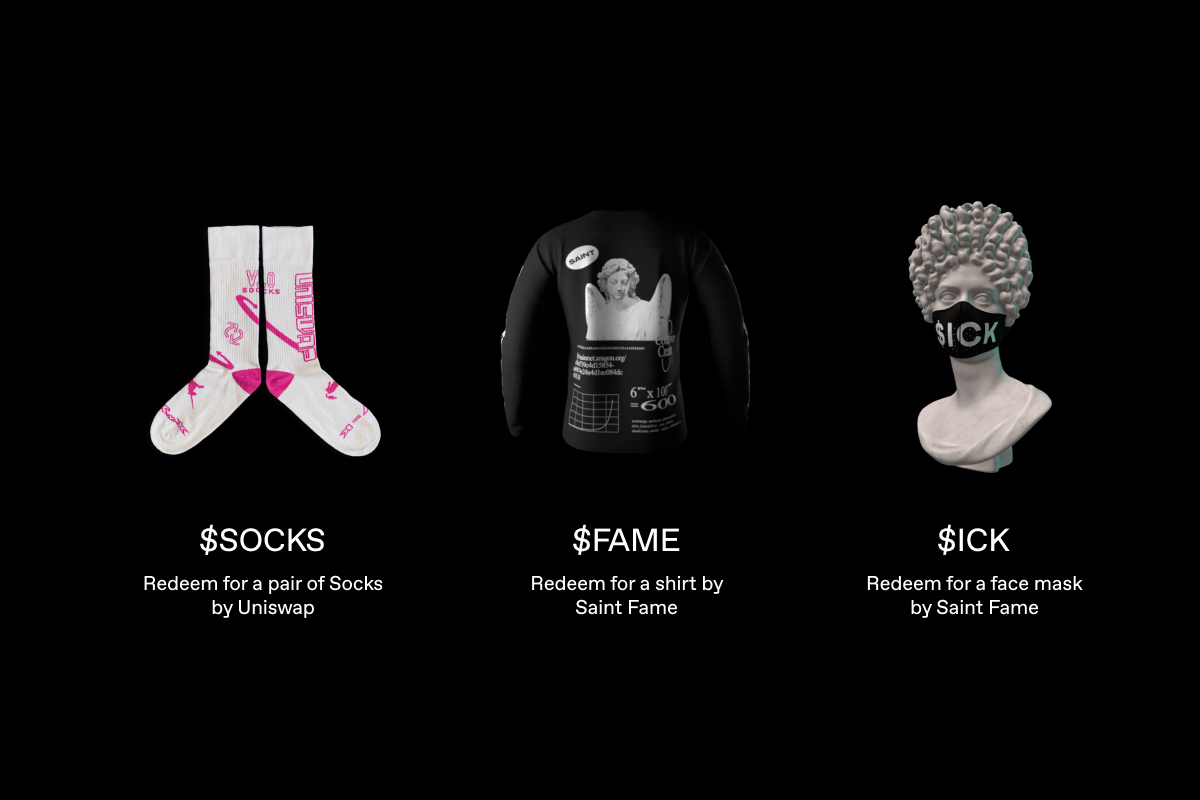
Redeem these tokens for physical goods:
- $SOCKS - redeem for Unisocks
- $FAME - redeem for Genesis Shirt
- $ICK - redeem for a Face Mask
Redeemable services

Redeem these tokens for services:
- $PEW: redeem for 1 retweet from Ameen on twitter
- $RCLE: redeem for 1 hour of legal engineering by Ross Campbell
- $BOI: redeem for 1 hour of design work by Matt Vernon
- $CNSL: redeem for 1 hour of work by Reuben Bramanathan
- $CLOUT, $SHOUT: examples of other forms of redeemable work tokens people could create for influencer work.
What’s new here?
Redeemable tokens are a way to bring “real world” value into crypto, which means they can be:
Price discovery on anything
By tokenizing something you make it incredibly easy for it to be exchanged and traded. You can create a liquid exchange on Uniswap with a couple of clicks and anyone in the world can access.
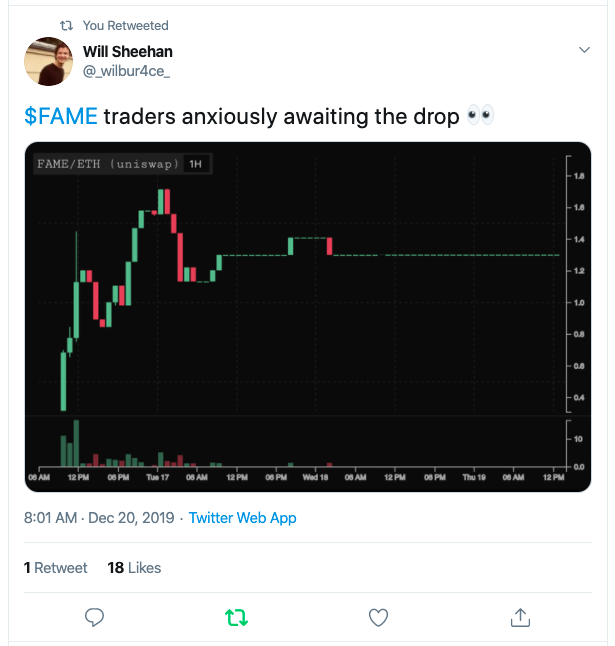
Facilitate Consumption and Speculation
People can buy and sell fractions of an item to speculate on the value of an item while also enabling people to claim the real world good. Securitizing a good to make it fractionally traded often removes the ability for anyone to own and use the real world good. Creating a redeemable token enables you to get the best of both worlds. The amount of speculative activity on real world goods like $SOCKS and $FAME has been incredibly surprising, with over $150k of trading volume across both items, with near 50% of that volume being purely fractional trades!
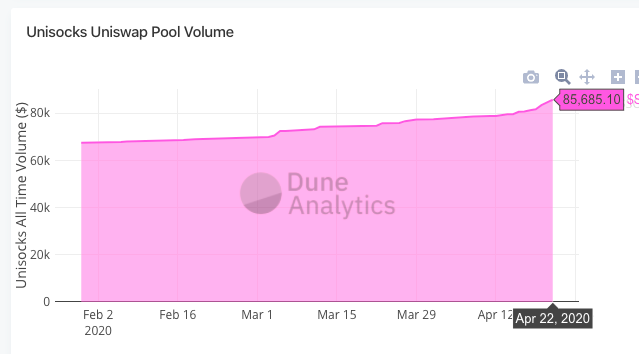
Digitally owned
This may seem like an overly simple point, but being able to hold and own the value of something digitally is a big unlock. It enables anyone to easily send and receive this value over the internet. Because it’s a token, it can also be programmed and utilized in the ever expanding world of DeFi and crypto at large.
One particularly interesting unlock is that anything that’s tokenized can be collectively owned and controlled by DAOs. When tokens are backed by off chain assets like a persons time, property or social media posts means that the DAO can collectively access and utilize it. Tokens are an interface for DAOs.
Saint Fame, a DAO-based fashion house is able to operate as an internet native company with its collection of redeemable tokens. The members of Saint Fame are able to collectively decide how and when to use the tokens that it holds, ranging from contracting work, to social media advertising and claiming revenue from the sale of it’s fashion items:
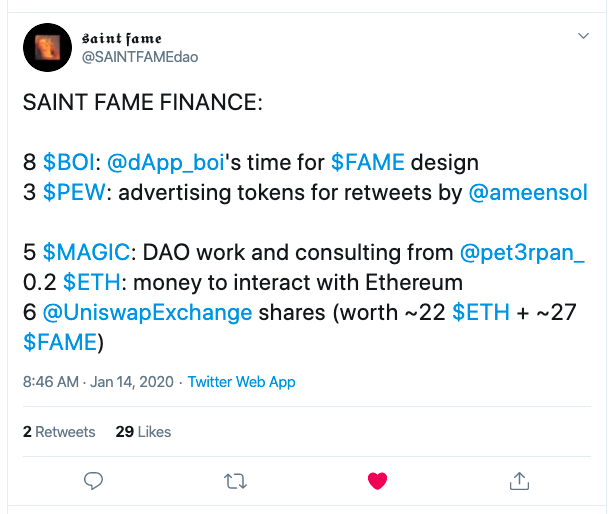
Creating a token that’s redeemable for something that doesn’t exist yet
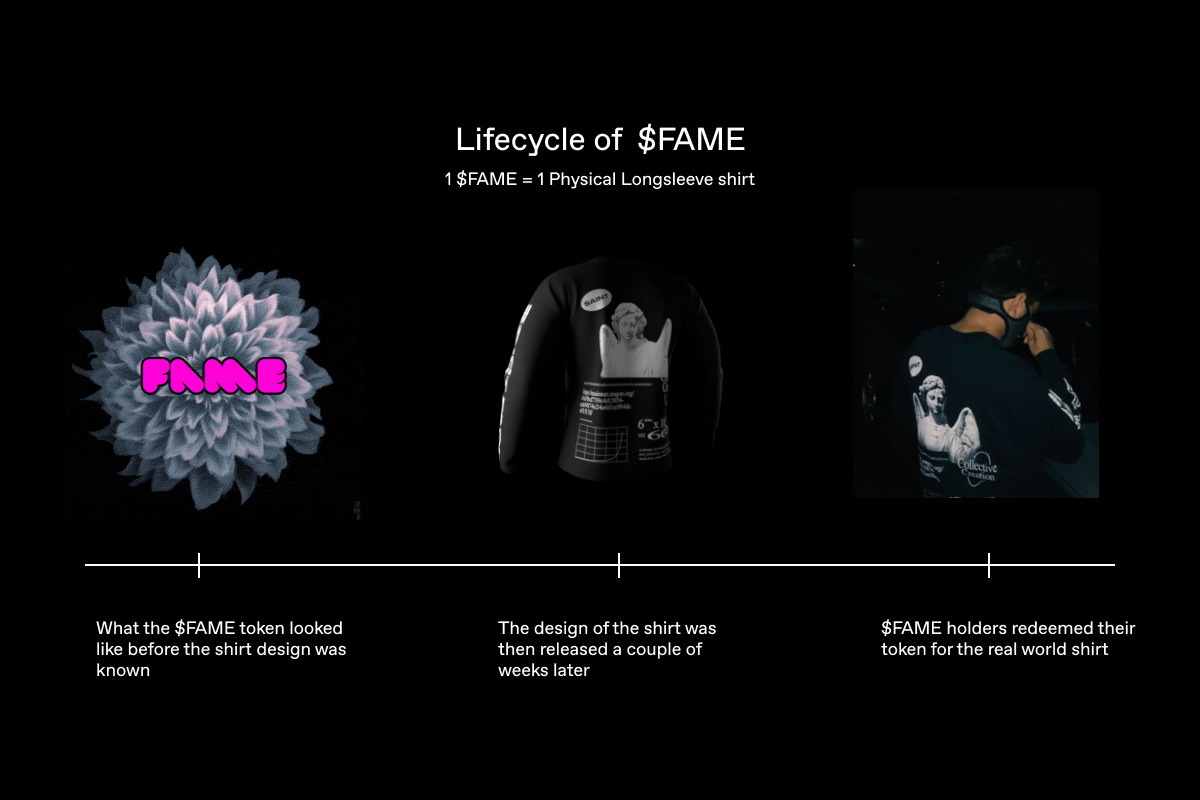
One of the most powerful tools in crypto is the ability to crowdfund. You can use a redeemable token as a means to crowdfund the good it’s meant to be redeemable for. You’re simply create a redeemable token for something that doesn’t exist yet, and then enable redemptions once the good is ready. In the case of Saint Fame, we released the $FAME token before we even knew what the design was, people were buying the idea of the shirt. This enabled us to prove out the demand of the token and have capital that we could use to fund production. The cost to launch was simply the cost of launching a token, which was roughly $0.30 in Ethereum network fees. Because of the dynamic price, our early buyers of $FAME had the option to either redeem the token for the real world shirt or simply claim a profit on the increased value as a result of the massive demand.
Challenges and considerations
Fungibility
Something is fungible if one unit of it is interchangeable with another unit. This is important because the ability to price a token is a function of how uniform redemptions are on a token by token basis. For example fiat tokens like USDC are perfectly fungible, because dollars in a bank account are all worth the same as each other. It doesn’t matter which dollar you get back.
If you have a token redeemable for a pair of Yeezy’s, it matters what size that token is redeemable for because the supply and demand of those Yeezy’s depends on that size.
If the token is redeemable for work completed by someone, that person may not want to complete the work you’re asking for you—or they may be less suited for your job compared to another redeemer.
Trust
For tokens that are redeemable for an off chain good or service you need to trust the issuer to make good on the redemption. You need to trust Coinbase to redeem you $USDC for a dollar, and Saint Fame to send you the real world shirt for $FAME.
The issuer has the incentive to uphold redemptions to maintain the market value of outstanding tokens, and of course their reputation is at stake.
It will be interesting to see if pseudonymous people and brands can successfully accrue enough trust to release tokens and maintain tokens of value, and if that accrued value is enough to incentivize them to not disappear off the face of the earth.
Digital versus Physical
Balaji Srinivasan has this great mental model of Primary v. Mirror:
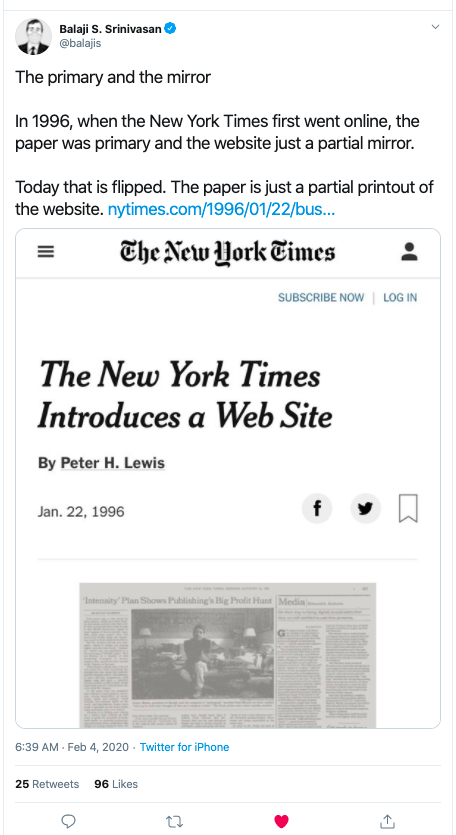
Tokens are a representation of the physical goods they’re redeemable for, the token is the “mirror” to the “primary” physical goods. We could expect to see the token themselves being the object that people want to own in and of themselves, and a physical good is no longer a necessity. This may already be the case, as we’re seeing relatively low redemption rates on goods like $SOCKS and $FAME. Long term I’d expect to see the vast majority of redeemable tokens be redeemable for all things digital:
- Digital goods like an in-game skin, crypto-artwork or even product access
- Experiences like playing a game against a Twitch-streamer or featuring on a podcast
- Services and work like product placement in an Instagram post or Youtube video
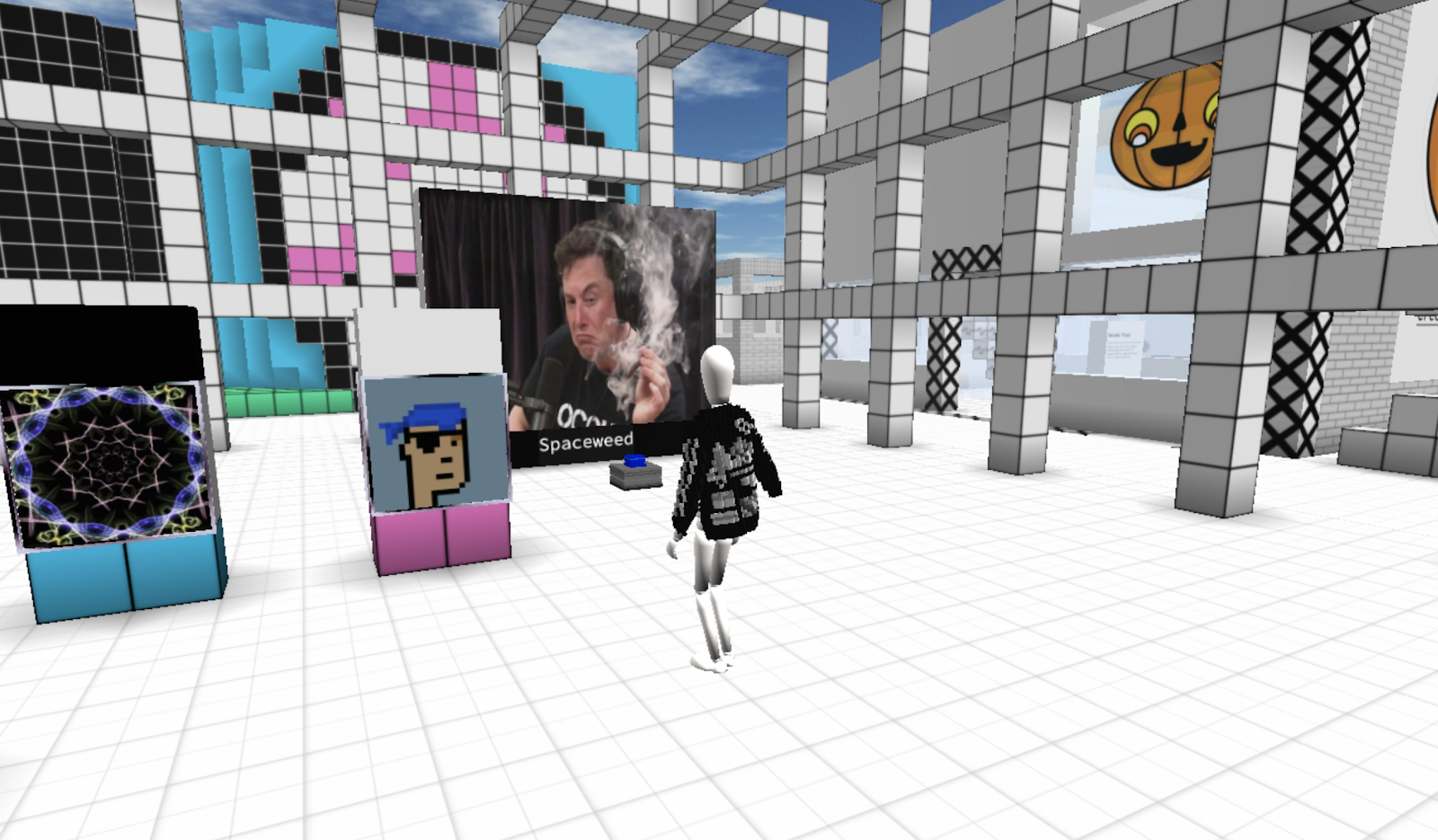
(Above) A Saint Fame $FAME shirt being worn digitally in Cryptovoxels
Never redeemed
Redemption rates on $SOCKS and $FAME are surprisingly low at around 30%. There are currently hundreds of socks and almost 70 shirts being stored somewhere in the world to back the remaining tokens. What if they’re never redeemed? People may only care about the tokens as a financial asset or as a virtual good, and the backing of the physical good means nothing. That’s an inventory problem for the issuer, storing those goods long term will be a challenge.
Tokenized everything
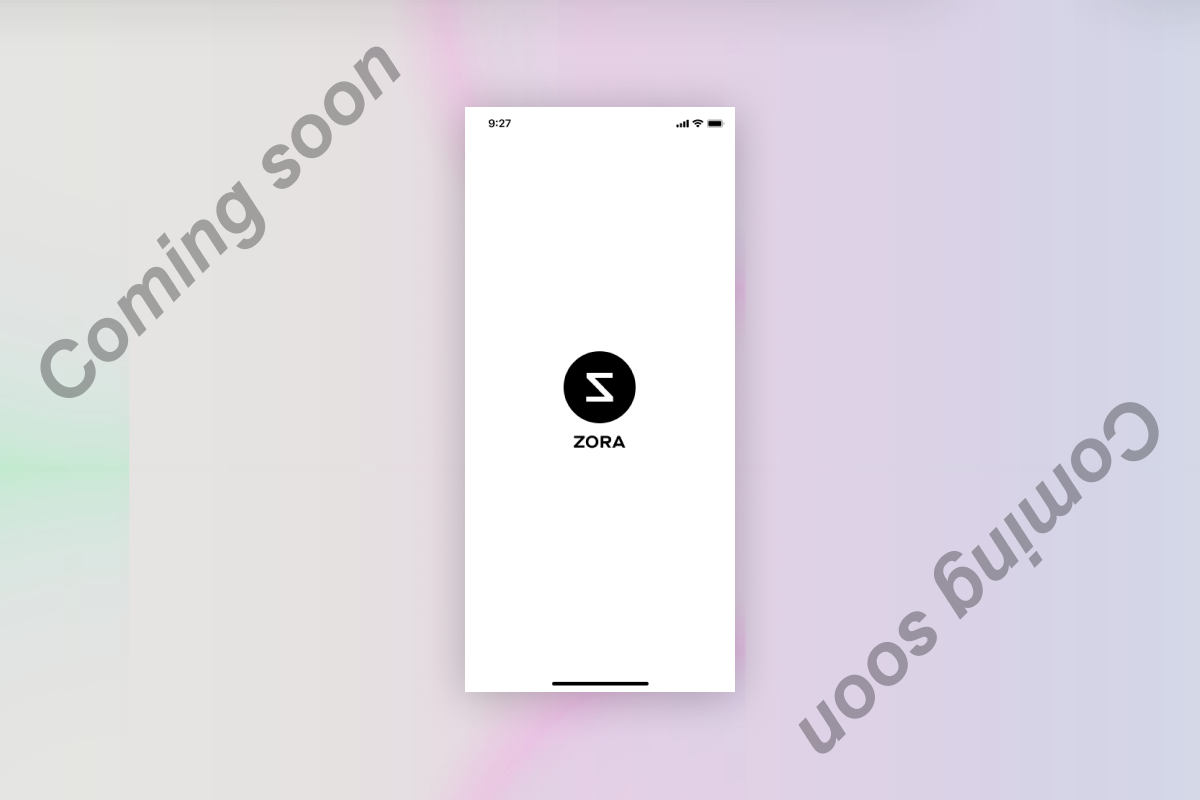
Tokens are an incredible tool that enables people to create, share and exchange value natively on the internet. To date, most tokens have been focused on purely protocol-based services and used for things like governance. Creating tokens for protocols and networks is extremely valuable when it works, but also extremely hard to do. Not everyone is a smart contract engineer.
With redeemable tokens, we have a medium that is easy for anyone in the world to use: simply create a token that is redeemable for anything of your choice, and now you’ve essentially uploaded its value to the internet. Once something is tokenized it can then be accessed by anyone with a computer and internet connection, programmed, exchanged and even collectively owned and controlled. The more that’s tokenized, the more we realize the vision of crypto being a democratizing force for finance.
One can view redeemable tokens as a collaborative tool or even a collaborative medium. Tokens are a perfect middle ground between the creator, buyer and speculator. The creator gets capital earlier, maximizes value capture with a dynamic price and engages their community in the earliest stages of an idea, while the speculator gets the economic upside from supporting a project early in its lifecycle and most importantly the buyer gets the good they ultimately want (or the economic upside!)—a win-win-win.
They are a way for anyone in the world to share a vision for the future, and provide a medium for anyone who wants to see that vision become a reality. It means that people can own a piece of the future that they want to happen, which in turn makes it more likely that it will happen. And when it does happen, it's theirs to redeem. Saint Fame would not have been possible without the ability to launch its idea for the shirt as $FAME. That simple process meant that there’s now one hundred real worlds that didn’t exist before.
What happens when we give the power to create these tokens available to everyone?
Where any creator and their community can come together to collectively bring their ideas to the world, using tokens as the medium? It’s hard to know for sure, that’s like trying to predict Instagram when the <img> tag was invented. But at the very least we know that tokens are a new way to capture an idea in something that’s tangible, ownable, shareable and importantly universally accessible to everyone in the world. In the same way the internet was a democratizing force that gave everyone in the world the ability to create and share information, we should see the same for tokens—where they become a democratizing force that gives everyone in the world the ability to create and share value—ultimately leading to a better society.
Author bio
Jacob Horne is the co-founder of Zora and a Coinbase alum. His team at Zora is dedicating their lives to building it a platform that makes it easy for any creator to drop their own token for their ideas. Follow them on twitter and sign up on their website.
Action steps
What kinds of opportunities do you see for redemption tokens?
Sign-up for future drops on Zora
Take a few minutes to wrap your mind around Unisocks:
Explore how Unisocks works
Look at Unisocks price over time ($133?)
Check out Unisocks trading volume (over $2,300 yesterday?)
Go Bankless. $12 / mo. Includes archive access, Inner Circle & Deals—(pay w/ crypto)
🙏Thanks to our sponsor: Aave Protocol
Aave protocol is a decentralized, open-source, and non-custodial money market protocol to earn interest on deposits and borrow assets. It also features access to Flash Loans, an innovative DeFi building block for developers to build self liquidations, collateral swaps, and more! Check it out here.

New to the Bankless program? Start here.
Not financial or tax advice. This newsletter is strictly educational and is not investment advice or a solicitation to buy or sell any assets or to make any financial decisions. This newsletter is not tax advice. Talk to your accountant. Do your own research.
Disclosure. From time-to-time I may add links in this newsletter to products I use. I may receive commission if you make a purchase through one of these links. I’ll always disclose when this is the case.